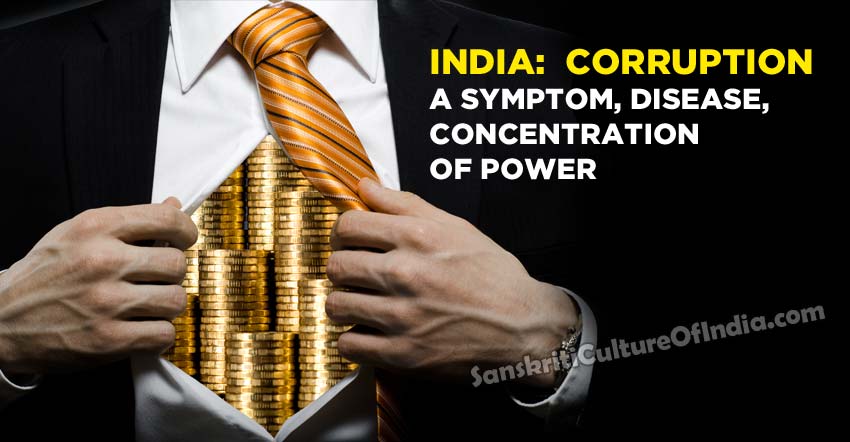India voted for itself the democratic form of governance based on adult suffrage. This empowerment of the common men brought about by a mere stroke of pen puts a boundary constraint on any plan of action for eradicating corruption in the country. The founding fathers of our republic could not visualize how democracy in a country which had never tasted it before in its history was going to evolve in the absence of nationalist leaders who were going to vanish from the scene over the next quarter of a century. They could not foresee the impact of the revolutionary technologies in the area of mass communication and entertainment on the aspirations of the masses in the absence of enlightened leadership at the national and the state levels. You are repeatedly reminded of the maxim: ‘You get the Government you deserve’.
ICS
Cadre-based civil service which came to be known as ICS was created after the first war of independence in 1857 by the British to administer this vast country with disparate cultures, languages, religions and regional disparities. Apart from administering the land revenue system, the main concern of the ICS was to preserve law and order and to have a system of intelligence to quell any uprising or a nationalist movement. ICS created a high prestigious and privileged class in the society which was a close well-knit service designed to maintain ‘stability and continuity of the British power’.
Imperatives of Democracy
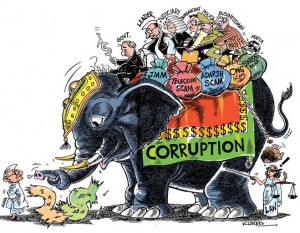 In a democracy, there is no ‘stability and continuity of power’ at the top as elected representatives come for a limited tenure of five years. Soon after independence, there was squabbling for sharing the spoils of power. Well meaning individuals having a nationalist mindset acquired during struggle for freedom were so dazzled by the trappings of the office that they hankered for the chair.
In a democracy, there is no ‘stability and continuity of power’ at the top as elected representatives come for a limited tenure of five years. Soon after independence, there was squabbling for sharing the spoils of power. Well meaning individuals having a nationalist mindset acquired during struggle for freedom were so dazzled by the trappings of the office that they hankered for the chair.
As the clamor by the members of the party in power for a piece of spoil got shriller, more departments were created, more ministers were appointed, more parliamentary committees and sub-committees were appointed each with their own perks, more districts were carved out, more railway zones were formed. This reckless expansion of the administrative structure with huge secretariat in each department resulted in over-staffing at all levels and a highly fragmented system of governance where the speed of decision making has considerably slowed down, accountability for results has blurred beyond recognition and common man is left to shoulder the financial burden of the huge bureaucracy.
Imperatives of Mixed Model of Economic Development
India adopted a mixed model of economic development with public sector assigned the role of ‘commanding heights’ of the economy as we were suspicious of white-skinned capitalist personified by the English East India Company.
This state controlled model of ‘planned development’ gave birth to public sector corporations in every sector of the economy. It also spawned a system of License Raj resulting in red tape, rampant corruption and shortages. In the absence of competition there were all round inefficiencies in the production of goods and services in both private and public sector. India fumbled along on the mixed economy development path for the first 44 years after independence till it was forced to take a loan from IMF. Under the covenants of the loan, India opened the economy selectively and introduced economic reforms beginning 1991.
The public sector corporations (center as well as state undertakings) gave rise to new cultural ethos which was a taboo in the government under the Service Conduct Rules. Since the corporations enjoyed much greater financial autonomy, they created the five star culture which the bureaucrats and politicians alike coveted, seeing the life style of the industrialists who waited in their ante rooms for an audience and a favor.
Imperatives of our Casteist and Feudalistic DNA
India has always been ruled by a coterie of a small upper-caste privileged class which had the culture of ‘entitlements’ ingrained in their blood over centuries by virtue of their birth. They were not subject to a uniform code of enforcement of rules and policies, which in any case were arbitrary and depended on the whim of the ruler at any point of time. There is an interesting anecdote that ‘yard’ as standard unit of measurement was established by royal decree as the distance from King Henry’s nose to thumb.
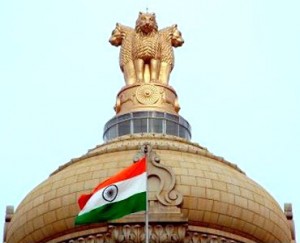 This class is not used to standing in line waiting for their turn for the redressal of their grievances, be it a traffic violation (vehicles with red beacon were a natural offshoot) or regularization of the building bylaws flouted during the construction of their own abode. In the post-independent India, we not only became equal by a stroke of pen but it was dinned into our ears by the politicians that they are framing all the policies and statutes (abolition of privy purses, nationalization of banks) treating us as equal. There could not be a bigger sham! In the post-independent India, the entitlement culture became more pervasive as the elected representatives of the people now personified a new ruling class.
This class is not used to standing in line waiting for their turn for the redressal of their grievances, be it a traffic violation (vehicles with red beacon were a natural offshoot) or regularization of the building bylaws flouted during the construction of their own abode. In the post-independent India, we not only became equal by a stroke of pen but it was dinned into our ears by the politicians that they are framing all the policies and statutes (abolition of privy purses, nationalization of banks) treating us as equal. There could not be a bigger sham! In the post-independent India, the entitlement culture became more pervasive as the elected representatives of the people now personified a new ruling class.
Unabashed pursuit of power devoid of any spirit of public service, every five years with declining quality of leadership at the national and the state levels, became the guiding creed of all the political parties. Instead of putting the process on a fast track of transformation of the cultural genes from feudal to democratic, they further slowed down the process by dividing the society on various parochial, caste, relegion and communal considerations in order to further their own electoral gains. A new privilege class was born – the political rulers with limited tenures and vision, and their cohorts, the IAS having a lifelong security of tenure.
Role of IAS
The name of the ICS was changed to IAS after Nehru observed that it is neither Indian nor civil nor service (to the people). But it continued to work in the same tradition and further reinforced the ‘privilege class, close-ended and well-knit’ character of the service. Because of their proximity to powers that be, IAS very quickly sensed the imperatives of democracy and the agenda for economic development, and the political DNA, which was a carbon copy of their own. They were more than willing to adapt to the changing ethos at the top in return for their own agenda to capture all the top positions in the administration both at the center and the state. State Electricity Board is split into five corporations and the top position in all the split entities is captured by IAS with the politicians agreeing to achieve their own end!
It is a splendid bargain on several counts:
(a) Additional top level posts satisfy the career aspirations of the IAS, keeping in check the intra-cadre competition and rivalries. The career progression path designed by them for themselves is a cube instead of a pyramid in shape common in every other organization;
(b) By grabbing with the connivance of the politicians all the top constitutional positions such as Chief Vigilance Commissioner, Comptroller and Auditor General of India, Chief Election Commissioner, they have become the prosecutor, the jury and the judge all rolled in one and would not allow exposure and public scrutiny of their own acts of omission and commission in the unabashed pursuit of power without accountability; and
(c) By virtue of the close-knit structure of the IAS, they practice double standards at work: one, for dealing with members of their own ‘privileged’ class and second, for dealing with rest of the services. IAS after one’s name was adopted by its members as an appellation of distinction – kind of knighthood, reminding one and all of the traditional casteist and feudalistic culture of the society (Raibahadur and Raisahib).
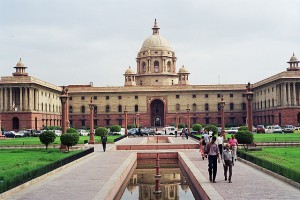 The apartheid practiced by IAS in services is essential in order to shield their own lack of experience and prior exposure of managing the technical departments. On the one hand they have no stake in the department or its morale because of the shortness of the tenure, and on the other, by maintaining a respectable distance from the Head of the Department (HOD), they succeeded in creating a Brahmin and non-brahmin class in civil services which was most pernicious in its effect on the morale and standards of professional integrity in services. The officers of the technical departments in a state felt totally frustrated and suffocated. They were denied the top post in the secretariat and hence did not have access to the politician. HOD had to do all the dirty work at the bidding of the political masters conveyed through the IAS. Even though this kind of concentration of power was perceived as illegitimate and humiliating, the officers in the professional departments had no option due to absence of job mobility. Over a period of time it resulted in a systemic erosion of professional leadership, professional integrity and professional ethics.
The apartheid practiced by IAS in services is essential in order to shield their own lack of experience and prior exposure of managing the technical departments. On the one hand they have no stake in the department or its morale because of the shortness of the tenure, and on the other, by maintaining a respectable distance from the Head of the Department (HOD), they succeeded in creating a Brahmin and non-brahmin class in civil services which was most pernicious in its effect on the morale and standards of professional integrity in services. The officers of the technical departments in a state felt totally frustrated and suffocated. They were denied the top post in the secretariat and hence did not have access to the politician. HOD had to do all the dirty work at the bidding of the political masters conveyed through the IAS. Even though this kind of concentration of power was perceived as illegitimate and humiliating, the officers in the professional departments had no option due to absence of job mobility. Over a period of time it resulted in a systemic erosion of professional leadership, professional integrity and professional ethics.
Uniform Enforcement
In the young free India, the three pillars of democracy – legislature, executive and press – slowly and inexorably were hijacked by the nexus between the politicians and the IAS and the fourth one, judiciary, has continued heavily understaffed. There is no will to remedy the situation as it runs in the face of our feudalistic DNA that all are equal in law. Justice delayed is justice denied to the victim which is the ground reality, be it in the rural areas or urban areas. A mindset has taken roots in the wealthy and the privileged that they can break the law with impunity and the law enforcement arm will not reach them.
Decline of the Moral Fiber of the Society
When people saw that their leaders who are not held accountable are getting rich by corrupt practices, they lost their moral values, civic sense and became selfish. When people see everyone in position of power looting the country, they feel that it is okay for them to do the same thing. Thus began the slow and steady erosion of moral values and decline of national character.
CORRUPTION –THE PRESENT STATE IN INDIA
Decimation of Professional Leadership
Head of Department (HOD) of professional departments stands denuded of all powers for managing his cadre – matters like transfers, postings and promotion. There is large scale stagnation. Cadre is mismanaged and human resource development is no one’s concern. Due to manipulative policies of IAS only pliant individuals make it to the top through whom IAS can work and get the results desired by the powers that be. As a result, morale (self-esteem and professional pride) of the officers in professional departments is quite low particularly in states.
 The line-departments are responsible for providing a service to the common man (like education to school children, medical care to the sick and preventing exploitation of the labor in the unorganized sector) and implementing the development projects. The common man comes in direct contact with the public servants in the state administration where the situation is truly pathetic.
The line-departments are responsible for providing a service to the common man (like education to school children, medical care to the sick and preventing exploitation of the labor in the unorganized sector) and implementing the development projects. The common man comes in direct contact with the public servants in the state administration where the situation is truly pathetic.
The consequential damages to the economy caused by the demise of the professional integrity and ethics are colossal, far more than all the corruption in purely monetary terms. Just to illustrate the point, the concrete roads cost three to four times the bituminous roads and are adopted on the high traffic density major highways. They are not meant for colony roads where rain water drainage is the main problem year after year.
There is surplus power in off-peak hours; agriculture power is subsidized and can, perhaps, be met in off peak hours. There is surplus power in certain regions which can be wheeled to deficit regions but for the squabbling over tariff. There is a maxim that no power is more expensive than ‘no power’ requiring generation by inefficient captive diesel (imported) generating sets.
Substantial quantities of natural gas in India are produced in association with crude oil production. Until the 1980s, most of this gas was flared off because of a lack of inter-ministerial consensus on the best use of this precious resource and inordinate delays by government in sanctioning of ONGC’s proposals for the undersea pipelines and on-shore processing facilities to bring it to customers.
Majority of the public sector projects suffer very heavy time and cost overruns due to lack of professional leadership on the one hand and lack of commitment and diffused accountability on the other.
These aspects have not attracted the public scrutiny because every technical department is headed by the IAS in the secretariat. Backing him is the ‘close-knit’ coterie of IAS officers occupying every top position in the state. They guard their turf most zealously against:
(a) any public scrutiny of the lapses of their own peers and
(b) intrusion by non-IAS. So blatant are the formal and informal rules framed by them that the walls of discrimination against non-IAS are almost impenetrable.
Any proposal requiring coordination and consultation among different Departments/Ministries always proceeds on a faster track when it is mooted by a department headed by IAS than that by a non-IAS (whose number in any case will be in single digit only) in order to demonstrate that a non-IAS is incapable of delivering results in the tortuous corridors of power in the secretariats of the central/state governments. This kind of discrimination also helps them in guarding their flanks and not exposing their ignorance of the department they happen to manage for a limited tenure.
Slowly and inexorably professional leadership, professional integrity and ethics got eroded. It will take years for the top grade leadership to come up which has been deliberately destroyed in the mad scramble for power.
Root of Corruption is Concentration of Power
IAS continued to adapt to the changing ways of the political masters; the nexus between the politician and the IAS is at the root of corruption in the country. The goals of the political masters and the IAS are common. The former has limited tenure and wants to earn money. The latter wants all the top posts without accountability as a quid-pro-quo. The greater was the bureaucrat committed to the new political realities, the greater was his reward in service and post-retirement. The independence of civil services and the spirit of service to people were illusions of the distant past.
 Corruption is a symptom; disease is concentration of power – authority without accountability. It is a cliché to say that power corrupts and absolute power corrupts absolutely, and power without accountability is a sure recipe for disaster, which the country has been saddled with for the past 67 years. It must be realized by powers that be that a coterie of less than 3500 members of the privileged clan is patently unequal to the task that lies ahead, the task of fulfilling the aspirations of the 1.27 billion that inhabit this subcontinent. In the history of the country never before was vested so much power in such a minuscule number of a privileged class. The system of checks and balances existing in every other service due to intra-service jockeying for the top position, which is only one due to the pyramidal shape of the cadre, was thrown to winds when it came to IAS due to the nexus between the IAS and the politician. They changed the shape of the cadre form a pyramid to a cube. They propose, their brethren in Finance concur and politicians sanction anything they desire for a quid pro quo. Politicians come and go. Their vision extends only to getting reelected at the end of the term. IAS provides the continuity at the top and has become the de facto ruler!
Corruption is a symptom; disease is concentration of power – authority without accountability. It is a cliché to say that power corrupts and absolute power corrupts absolutely, and power without accountability is a sure recipe for disaster, which the country has been saddled with for the past 67 years. It must be realized by powers that be that a coterie of less than 3500 members of the privileged clan is patently unequal to the task that lies ahead, the task of fulfilling the aspirations of the 1.27 billion that inhabit this subcontinent. In the history of the country never before was vested so much power in such a minuscule number of a privileged class. The system of checks and balances existing in every other service due to intra-service jockeying for the top position, which is only one due to the pyramidal shape of the cadre, was thrown to winds when it came to IAS due to the nexus between the IAS and the politician. They changed the shape of the cadre form a pyramid to a cube. They propose, their brethren in Finance concur and politicians sanction anything they desire for a quid pro quo. Politicians come and go. Their vision extends only to getting reelected at the end of the term. IAS provides the continuity at the top and has become the de facto ruler!
Present State of Government Sector
All the civil services have been closely watching how successful IAS has been in managing the politicians. The sure recipe for success was to cultivate a direct line to the political masters. There was now a senseless race among the civil servants of all the departments at all levels to please the political masters and the minions surrounding them.
 Every government employee has security of employment. He enjoys high pay scales relative to his counterpart in the unorganized sector and substantial fringe benefits and numerous legitimate and mostly illegitimate perks. Since management is also a party to having illegitimate perks and to bending of the rules in order to please the members of the privileged class and the political bosses, he has lost his moral right to enforce discipline at work.
Every government employee has security of employment. He enjoys high pay scales relative to his counterpart in the unorganized sector and substantial fringe benefits and numerous legitimate and mostly illegitimate perks. Since management is also a party to having illegitimate perks and to bending of the rules in order to please the members of the privileged class and the political bosses, he has lost his moral right to enforce discipline at work.
In order to protect their own turf every class of public servant has formed associations and trade unions which can bring any management to its knees by collective action. This has resulted in systemic vitiation of work ethics in the government services. There is overstaffing. Absenteeism is rampant, discipline is lacking and management of labor is given up as a hopeless task. The easy way out is outsourcing and employing labor through labor contractor. This is not a solution as the labor contractor’s practices are exploitative which only result in a more violent eruption later as witnessed in the case of Maruti labor unrest resulting in the murder of a senior executive. Yes, there is corruption at all levels but the consequential damage caused by the erosion of work ethics and professional integrity is far more than the monetary amount of moral turpitude (giving and taking bribe).
Private Organized Sector
Accountability and labor management practices in the private sector are certainly better than government sector only because the gap between ownership and control is relatively less. In the public sector it is difficult to pinpoint the ownership and the resultant accountability for even a project under implementation.
Income Pyramid
Annual household income of the top 20% of the population is estimated to be in excess of Rs. 2 lac (McKinsey Report, 2007). About 8% of these households are in public sector and the balance 12% is in the private organized sector. They (classified as ‘seekers’ and ‘strivers’) have achieved varying degree of economic security and are protecting their turf very zealously through various associations and trade unions. This 20% in terms of number of persons amounts to 250 million, more than the population of Indonesia the fourth most populous country after China, India and USA.
The remainder 80% of the population is in the unorganized sector including construction sector. Annual household income at the base of pyramid, constituting 40% of the total population, is less than Rs. 90,000. They are the poorest of the poor (POP). This segment of the population is ‘deprived’ and living in abject poverty.
Annual household income of the remaining 40% of the population, classified as ‘aspiring’, is in the range of 90,000 to 200000.
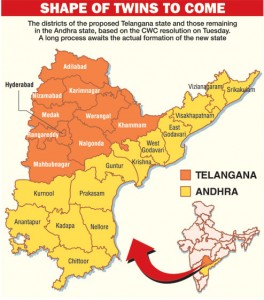 POP is not concerned about Telengana one way or the other. His only concern is getting some work and getting fair wages for the labor put in so that he and his family can have two square meals; he is concerned about his security and the security of his women. He may not even be aware of the welfare schemes administered by a state notwithstanding all the publicity in the media at the time of elections.
POP is not concerned about Telengana one way or the other. His only concern is getting some work and getting fair wages for the labor put in so that he and his family can have two square meals; he is concerned about his security and the security of his women. He may not even be aware of the welfare schemes administered by a state notwithstanding all the publicity in the media at the time of elections.
Decimation of National Character
We got our freedom by means which inadvertently sowed the seeds of challenging the established authority, which was perceived illegitimate by large sections of people in the pre-independence era. Since this approach was singularly successful (we got our freedom without endangering our own personal safety), the agitationist approach has continued in various forms against the legitimate democratically elected authority in the post-independence era also. Due to a weak and successively more corrupt political leadership, any collection of individuals with some electoral clout based on caste and religion either got what they wanted, or they got away with causing untold public inconvenience and destruction of public property by indulging in all manners of agitation. Respect for law was gradually eroded due to impatience of the people at not getting a perceived fair share of the economic pie which was not growing fast enough. Impatience of the youth in various parts of the country took a violent turn and gave birth to insurgency and Naxalism. There is a breakdown of law and order in vast regions of the country. Our young officers and jawans are laying down their lives and the Government is indifferent to their sacrifices. Mindset of the society is that it is someone else’s problem. ‘Dilli durast’.
Equality in society enshrined in the constitution only remained on paper due to the casteist and feudalistic culture of the society. Regional parties and petty politicians only added fuel to the fires of discontent and disaffection raging in different parts of the country for their own electoral gains by heightening further the fault lines of cast, religion and income disparity which always existed in the fractured Indian society.
Era of Consumerism
The side effect of the economic reforms has been the ushering in the era of consumerism in 1990s. Peoples’ aspirations are skyrocketing, outstripping their competency levels and financial capacities. The casteist/feudalistic DNA of ‘entitlement/inheritance’ by the privileged few in utter disregard of the democratic ideals and in the firm belief that the enforcement arm will not reach them (so many charge sheeters and convicted persons adorn our legislatures!), has corrupted the basic moral fiber of the society. The slow and steady decline in the governance standards has been accompanied by a decline in the moral values and work ethics in the society. Government failed to enforce the rules uniformly across all sections of the society, be it for economic offences or criminal acts, as it had lost the moral authority to govern. The national character has taken a severe beating. The four pillars of democracy, which never got a chance to sheet anchor their foundation, are now tottering.
ERADICATING CORRUPTION – AN AGENDA FOR ACTION
Gangotri of Corruption Flows from the Top
For eradicating corruption in the government, a beginning, naturally, has to be made from the top. AAP experiment has demonstrated that big money may not be an essential requirement if the politicians in a spirit of service can connect directly with the people at the base of the pyramid. Cleansing of the system can thus begin only with people who are imbued with a spirit of service to the public rather than to rule them, or feather their own nest. The power and authority bestowed on a politician and bureaucrat alike is a public trust to be exercised in the best interest of the common man.
Jan Lokpal Bill or the institution of an independent Lok Ayukt can serve as a good deterrent but is not a solution. Any institution or policy is only as good as its impartial and uniform enforcement and implementation. You have at this point of time only a creaky and a thoroughly corrupt and inept administrative apparatus for investigation and prosecution with inordinate delays. There is big money behind corrupt politicians and the top administrative appointees in the CPSUs. The system stinks but cleansing has to begin by working from within the system, which, alas, AAP did not measure up to!
There is no other option in a democracy.
Pluralistic Society
The most important item of any agenda for eradicating corruption in the Indian context as it obtains today is to move in the direction of a pluralistic society having multiple centers of power with complete autonomy, free from government interference. Undue concentration of power in any institution, service or an undertaking – public or private – is not in public interest. The myth that administrative leadership can only be provided by IAS must be exposed and broken. It is not conducive to creation and nurturing of leadership in numerous professional departments responsible for providing a service to common man and implementing the development projects.
Most central ministries are having one or more organized civil service under them. For example, Finance Ministry controls the cadre of Indian Economic Service, Indian Revenue Service (Customs and Central Excise) and Indian Revenue Service (Income Tax). All the posts in the Finance Ministry should be filled only by officers from these services in order to maintain the integrity of the service pyramid, improve the professional standards and provide continuity and accountability of leadership.
Similar action needs to be taken in states also.
Downsizing of Government
 Government at the state and center should be downsized. A whole lot of departments/ministries should be merged in order to streamline the working and speed up the decision making in the government, and to bring in sharper focus accountability for results. All the power concentrated in the secretariat should be decentralized and delegated to the heads of the line departments and numerous Boards and Authorities created for a specific purpose. Principal Head of the Department should be ex-officio secretary of the department advising the minister in-charge. There are enough checks and balances in the system. They need to be made transparent and enforced uniformly by impartial public servants.
Government at the state and center should be downsized. A whole lot of departments/ministries should be merged in order to streamline the working and speed up the decision making in the government, and to bring in sharper focus accountability for results. All the power concentrated in the secretariat should be decentralized and delegated to the heads of the line departments and numerous Boards and Authorities created for a specific purpose. Principal Head of the Department should be ex-officio secretary of the department advising the minister in-charge. There are enough checks and balances in the system. They need to be made transparent and enforced uniformly by impartial public servants.
The Role of Government in Economic Sphere
It should be limited to creation of infrastructure (construction sector generates huge employment albeit in unorganized sector) in partnership with private sector. Encourage and promote a culture of entrepreneurship and not entitlements.
Job Creation
 Jobs have to be created by entrepreneurs in order to satisfy the aspirations of the ‘aspiring’ segment (middle 40% of the income pyramid) of the population. Private sector cannot meet this challenge by mere expansion of the indigenous manufacturing base to satisfy the internal consumption of this burgeoning class. Jobs cannot grow at a rapid enough pace to satisfy the aspirations of the youth.
Jobs have to be created by entrepreneurs in order to satisfy the aspirations of the ‘aspiring’ segment (middle 40% of the income pyramid) of the population. Private sector cannot meet this challenge by mere expansion of the indigenous manufacturing base to satisfy the internal consumption of this burgeoning class. Jobs cannot grow at a rapid enough pace to satisfy the aspirations of the youth.
We enjoy a ‘comparative advantage’, in the area of trained manpower exports in two ways: one, our felicity with English language and, two, our favorable demographics. This can be pursued in a systematic way as a national mission. Suitable export incentives should be offered to the private sector to export manpower by training them in the skills in demand overseas. They have their ears closer to the ground so they can quickly gear up to the task of training the manpower in demand in a particular overseas market. A small percentage of income earned by the overseas workforce can be retained by the industrial unit sending them. Suitable regulations can be enacted to ensure welfare and to avoid exploitation of the workmen sent to take up overseas jobs.
Economic Reforms
Economic reforms should be pursed further in order to loosen the stranglehold of bureaucracy on entrepreneurship. Labor reforms in the organized sector are the need of the hour.
Government should divest its stake in all public sector undertakings (save for a handful considered strategically important) and make them autonomous. There should be no serving officer of the nodal ministry on the Board of Directors of the company. Arm’s length relationship should exist between the nodal ministry and the public sector undertaking.
The Public Enterprises Selection Board should be brought at par with UPSC in autonomy and constitutional status and should be manned by persons of unimpeachable integrity and proven competence. They should conduct the selection for the top appointments in the CPSUs in a fair and transparent manner. States should follow suit.
Role of Regulatory Agencies: Government should play more proactive role in the regulation of the economic activity through creation and/or strengthening of the existing independent autonomous regulatory agencies. The name of the game is uniform and ruthless enforcement of the rules and policies across the board totally eschewing the feudalistic streak in our culture favoring the select few.
In the wake of the accounting fraud by Satyam Computers, the worst of its kind in corporate history, Charter of Duties, accountability, and remuneration of the nonfunctional directors should be laid down and the process of their appointment made more transparent. Profession of auditors should be covered by the same provisions as Medicine and Law, where the loss of membership may also imply the loss of the right to practice. In such high profile case as Satyam where the admission of guilt has been accepted by the accused, the guilty have not been brought to book even after five years! Those found guilty should be treated like common criminals and incarceration should not be sojourn to a 5-star guest house.
Shake up of the Upper Echelons of Bureaucracy
 Bureaucrats are quite cozy with the existing system – lifetime security of service, huge perks (legitimate and illegitimate), tremendous power and prestige, and no accountability. They have a vested interest in maintaining the status quo. This smugness must go.
Bureaucrats are quite cozy with the existing system – lifetime security of service, huge perks (legitimate and illegitimate), tremendous power and prestige, and no accountability. They have a vested interest in maintaining the status quo. This smugness must go.
There should be strict enforcement of Service Conduct Rules. Annual Immovable Property Return should include all the members of the family, whether dependent or not. A plaque saying “I am a public servant and I am here to serve you” should be hung in the office of every officer to remind him of the spirit of humility and service in the conduct of his dealings with public.
Useless forms in public dealings should be eliminated. All permanent records must be digitized. Every email must be acknowledged. All government websites should be up to date. E-governance should eliminate the need for going to offices.
Criteria for appraisal of officers should be made uniform and transparent. They must be graded on a curve, and any officer giving top grade to everyone in order to gain cheap popularity must be ticked off.
After retirement, there should be a minimum cooling off period of 5 years for taking up a job in the private sector including non-functional directorship of the private corporations.
Police Reforms
One of the important duties of state government is to ensure security of its citizens. Supreme Court’s seven directives on police reforms made by successive committees must be implemented by the state governments in a time bound manner. Political interference in the functioning of the police department at all levels has become so rampant that it deserves to be made a political issue in any election as the situation on the ground today is intolerable.
Janamaithri Suraksha Project launched by Kerala Police Department is worthy of emulation in other states. Community participation in the maintenance of law and order is a laudable objective. The success of any initiative depends, however, on the commitment at the top. In today’s climate, the top’s vision extends only up to the agenda of his boss and his own personal interests. This smugness at the top, which percolates down to lower levels, must go. The line between bribery and extortion has got obliterated!
Judicial Reforms
The system of delivering justice must be made fast and responsive to the needs of the common man. As a rule, the number of cases disposed of in a year must not be less than the total number of new cases instituted in all the courts in the county so that the pendency of the cases is frozen at the current level. Resources should then be found to dispose of the pending cases in a fixed time frame.
In order to bring about greater transparency and accountability and confidence in the judicial system, a secret system of evaluation of the judges by their own peers in the High Courts and Supreme Court could be considered; the results of the peer-evaluation should be compiled by the Registrar and published on the court’s website. At the apex level of the judicial system, perhaps, self-regulation in a transparent manner alone may instill confidence in the public.
Social Strife due to Income Disparities
 The bottom 40% segment at the base of pyramid (POP) is a very powerful vote bank which can turn the fortunes of the politicians. They cannot be brought in the mainstream of economy at the level of aspirations of the middle 40% (aspiring class) of the income pyramid in the foreseeable future as there are limits to economic growth. There is a school of thought vocally advocating that mother Earth does not have the resources to meet the aspirations of the seven billion plus people inhabiting the planet. However, no civilized government, particularly, the one that depends on his vote for re-election, can deny the ‘deprived’ the dignity due to him as a human being.
The bottom 40% segment at the base of pyramid (POP) is a very powerful vote bank which can turn the fortunes of the politicians. They cannot be brought in the mainstream of economy at the level of aspirations of the middle 40% (aspiring class) of the income pyramid in the foreseeable future as there are limits to economic growth. There is a school of thought vocally advocating that mother Earth does not have the resources to meet the aspirations of the seven billion plus people inhabiting the planet. However, no civilized government, particularly, the one that depends on his vote for re-election, can deny the ‘deprived’ the dignity due to him as a human being.
The ‘deprived’ 40% of the population will have to survive in the near future on ‘transfer payments (various welfare schemes instituted by government)’ from government’s taxation kitty to make the two ends meet. Most of the households in this segment do not have access to formal sources of credit. The administrative apparatus for delivering the benefits to the targeted beneficiaries requires to be based on information technology as far as possible, to plug the leakages. Aadhar is a very good beginning and can provide the foundation for the financial inclusion of the targeted beneficiaries in an efficient manner through mobile banking system. Supporting banking infrastructure needs to be created on the ground and beneficiaries educated in the use of Aadhar.
Ostentations expenditure must be discouraged by suitable fiscal disincentives. Abject poverty and squalor and obscene display of wealth cannot coexist for long and have potential of igniting fires of social strife. Recent studies sponsored by NASA have brought out that stark income disparities lead to decay of civilizations and are not ecologically sustainable (http://www.theguardian.com/environment/earth-insight/2014/mar/14/nasa-civilisation-irreversible-collapse-study-scientists). Symbolism of AAP has its own virtue and is worthy of emulation by the leaders and intellectuals in the society. Vulgar display of wealth must be eschewed.
It is in our own enlightened self-interest.
~ by M. M. Goyal (Retd. Additional Member, Railway Board)

